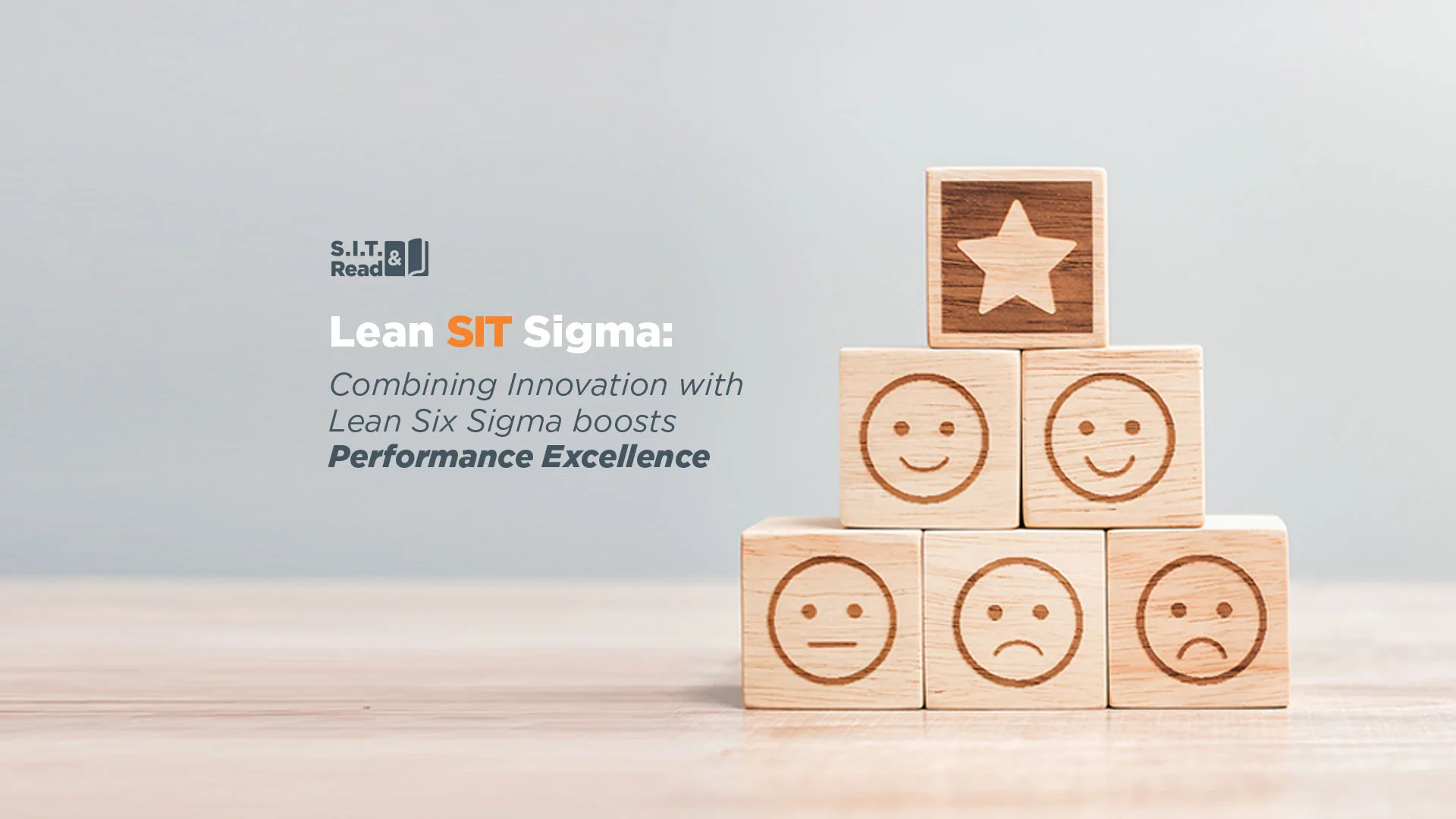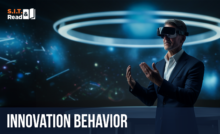Lean Six Sigma + SIT = The Ultimate Duo?


Lean SIT Sigma: Combining Innovation with Lean Six Sigma boosts Performance Excellence
Lean Six Sigma (LSS) follows a highly coherent, systematic, logical and intuitive approach. But we know that ultimately high-impact productivity also requires the creation of innovative and disruptive opportunities and solutions that break through current organizational perceptions and work processes. This is something that Lean Six Sigma alone is not equipped to do but can be performed well with the addition of SIT (Systematic Inventive Thinking) into a triad of methodologies, we call Lean SIT Sigma.
LSS does well what it is designed to do well, which is help you analyze and map where improvement is needed. LSS was never designed to help you find new solutions or new ways to do things. Performance Excellence, however, requires an organizational commitment find the best solution in any given situation that will deliver value right along the chain and that may require performance breakthroughs beyond the remit of Lean Six Sigma alone.
As one of our clients in Minnesota commented: “SIT combined with Lean Sigma is remarkable; our organizational culture requires data, measurement upfront. However, we also need the more innovative ideas that SIT brings to the process.


Lean Six Sigma Principles
Lean Six Sigma is powered by principles which are governed by continuous improvement. Change is achieved by a regular sharpening of the process and constant monitoring of how the process can be improved. In our work with the Six Sigma Black Belts at the Bolivar Group, the application of SIT enabled a stunning ten-fold increase in time savings– compared to that previously achieved by Lean Six Sigma alone– in the turnaround time for an equipment leasing operation. Such an increase more than justifies the inclusion of such an approach to the productivity mechanism within organizations.
Whilst Lean Six Sigma has a proven track record in improving quality, reducing waste, improved capacity utilization, lowering costs and other aspects, the kind of disruptive leaps which push to performance excellence are often made possible by the addition of the innovation approach fostered in the Lean SIT Sigma format.
The DMAIC (Design Measure Analyze Improve Control) improvement cycle
The DMAIC (Design Measure Analyze Improve Control) improvement cycle is the core tool in many LSS programs. While SIT contributes to the Define & Measure to help identify the subtopics that can be worked on, Lean and SS tools help quantify the potential impact of those areas. The biggest contribution of SIT is around HOW the improvement can be made in ways not yet thought of, utilizing as few organizational resources as possible, and limiting additional investment (capital, labor, or otherwise) for the change. That very naturally leads to building experiments and pilots in the Analyze stage, the results of which will then lead to Improve adaptations.
The End to End Ripple Effect
SIT’s approach looks at the process through the lens of the entire Value Chain. When too much focus is placed on strict adhesion to Design and Measure, it creates myopia, finding solutions in one area that influence efficiencies at other stages upstream or downstream the value chain. We call this The End to End Ripple Effect.
A “Positive Ripple” is one that creates a positive productivity impact on an E2E level and should be encouraged. A “Negative Ripple”, however, is one that “throws the trash in someone else’s backyard” without calculating the cost of such a maneuver on an E2E level:
For example – decreasing interim-inventory might increase finished goods inventory. While this may be a price the organization is willing to pay, it needs to be calculated and discussed in context with other alternatives and with those responsible for the affected areas of the value chain.
The worst ripple of this type is one that ends up negatively affecting the purchaser or end-user. Which points to the next area where SIT thinking contributes. As one Lean Sigma Black Belt recently commented:
“We are not used to thinking about these issues from the customer perspective and SIT really complements Lean Sigma by adding value to the customer. LSS looks inside the business and with SIT we really looked at the customer and understood what goes on there.”
Lean SIT Sigma, 20+ Years Later…
Most will agree that the confluence of Lean and Six Sigma at the turn of the century into a practical working methodology has enhanced and complemented each, making Lean Six Sigma a highly structured, rational, and beneficial approach. Seventeen years on – the integration of SIT with LSS into a triad of methodologies, Lean SIT Sigma, will better deliver on the demands of achieving a sustainable approach to higher-impact performance excellence.
After all, Omne trium perfectum, the famous Latin saying that everything that comes in threes is perfect (or, every set of three is complete) has been long considered a universal truth. Universal? Probably not…but certainly true when it comes to helping companies retain high standards of quality while substantially increasing efficiency.
Recent Posts
Innovation Behavior
Innovation is a skill, not a gift. Top organizations drive growth by nurturing and investing…
Should you learn TRIZ? – Yes. ….and No.
Are you in the world of problem solving? Is problem solving a skillset you have…
What Lies Ahead in 2024?
5 Data-Driven, Customer-Centric trends we’ve identified This is not just another conventional forecast. Over nearly…
Fork or Chopsticks – Which Innovation Tools Do You Use?
Imagine a chef, who only uses a spoon. Imagine a dentist, who only uses a…
The Moat Mentality: Exploring New Frontiers in Innovation Methodologies
In investing and business strategy, we often speak in terms of moats. Warren Edward Buffett…
Was it a Breakthrough or an Adjacency?
This year, P&G’s Febreze celebrates its silver anniversary as a brand. But not all 25…



View Comments
Your article helped me a lot, is there any more related content? Thanks! https://www.binance.com/ka-GE/register?ref=T7KCZASX
Thank you very much for sharing, I learned a lot from your article. Very cool. Thanks.